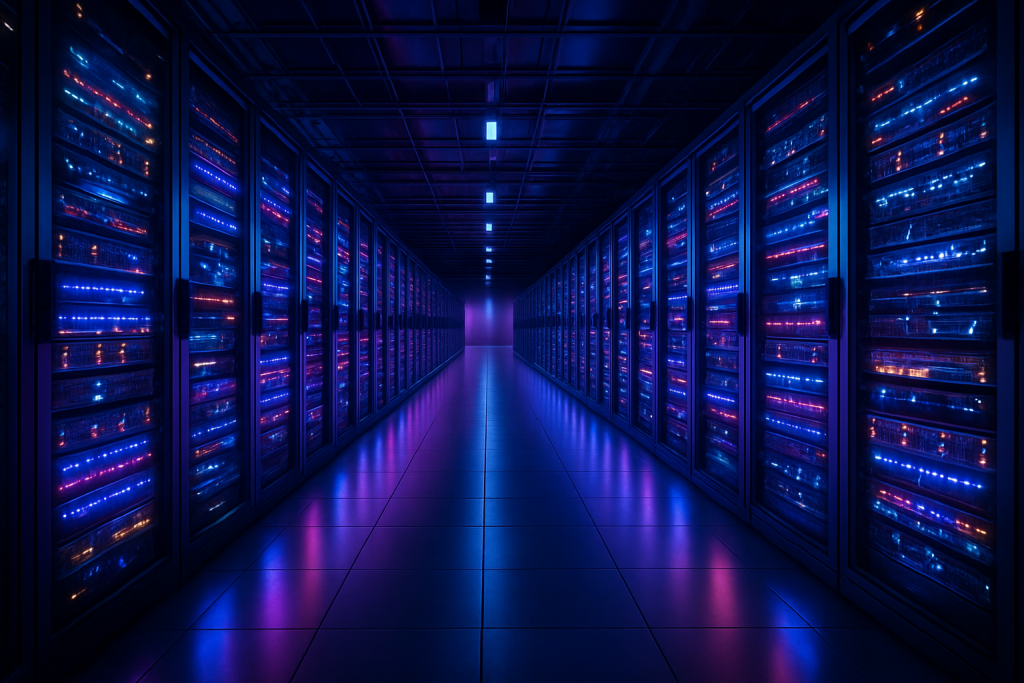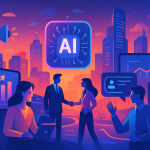The robots are coming for our jobs. Okay, maybe not robots in the clanky, metallic sense of your favorite sci-fi flick, but the sentiment rings true. Amazon CEO Andy Jassy dropped a bombshell on June 18, 2025: the company anticipates a significant reduction in its corporate workforce over the next few years, all thanks to the rapid and relentless march of generative artificial intelligence.
In a memo that probably caused more than a few nervous glances around Amazon’s Seattle headquarters, Jassy stated, “We will need fewer people doing some of the jobs that are being done today, and more people doing other types of jobs.” He softened the blow by adding that the exact net effect remains uncertain, but the writing’s on the digital wall: AI-driven efficiency gains are expected to shrink Amazon’s corporate headcount. It’s a brave new world, and apparently, one with fewer cubicles.
This isn’t some sudden, knee-jerk reaction. Amazon has been quietly (and not so quietly) building its AI empire for years. Think of it as Skynet, but instead of launching missiles, it’s optimizing logistics and recommending your next impulse purchase. The company boasts over 1,000 generative AI services and applications either in development or already deployed. That’s a staggering number, and it speaks to the sheer scale of Amazon’s AI ambitions. They’re not just dabbling; they’re diving headfirst into the deep end of the AI pool.
Jassy is urging Amazon employees to embrace the change, encouraging them to attend workshops, participate in training, and experiment with AI tools. It’s a clear message: adapt or risk becoming obsolete. It’s like Neo learning Kung Fu in the Matrix, except instead of dodging bullets, they’re dodging potential layoffs. The goal, of course, is to leverage AI to innovate more effectively for customers. After all, happy customers mean happy shareholders, and happy shareholders mean… well, probably still fewer jobs, but at least the remaining ones are more interesting?
But all this AI power requires serious infrastructure. We’re talking about the kind of computing power that could make HAL 9000 blush. Amazon is pouring billions into new data centers and campuses across the US. A cool $10 billion is earmarked for a new campus in North Carolina, specifically designed to expand cloud computing and AI capabilities. And that’s just the tip of the iceberg. Another $10 billion each is going into data center projects in Mississippi, Indiana, Ohio, and North Carolina, with a further $20 billion planned for two colossal data centers in Pennsylvania. That’s a whole lotta servers. The sheer scale of this investment underscores the importance Amazon places on AI and cloud computing, recognizing that these technologies are the future of, well, pretty much everything.
Amazon’s AI isn’t just confined to internal operations. It’s also making its way into the consumer-facing products we use every day. Remember that awkward dubbed dialogue in your favorite foreign Prime Video series? Well, Amazon’s testing AI-aided dubbing to make it less awkward. And Alexa, your friendly neighborhood voice assistant, is getting a generative-AI-infused upgrade. Prepare for even more eerily accurate responses and potentially even more unsolicited product recommendations. Because who needs privacy when you can have convenience, right?
The company is also playing the venture capital game, investing another $4 billion in the AI startup Anthropic, a company that’s quickly becoming a major player in the AI landscape. Plus, Amazon is teaming up with Intel to develop custom AI chips, further solidifying its position as an AI powerhouse. It’s a full-court press, folks. They’re not just building AI; they’re building the infrastructure, the talent, and the partnerships to dominate the AI era.
This announcement isn’t happening in a vacuum. It reflects a broader trend across the tech industry. Companies everywhere are racing to integrate AI, seeking to boost efficiency, drive innovation, and, yes, reduce their workforce. It’s the classic innovation dilemma: progress often comes at a cost, and in this case, that cost may be jobs. This raises a crucial question: what happens to the displaced workers? Will they be retrained and reskilled for new roles, or will they be left behind in the AI revolution? It’s a question that policymakers, educators, and businesses need to address urgently.
The ethical implications are also significant. As AI becomes more powerful and pervasive, we need to consider the potential for bias, discrimination, and misuse. Who controls the data that feeds these AI systems? How do we ensure that AI is used for good and not for nefarious purposes? These are not just abstract philosophical questions; they are real-world challenges that demand careful consideration and proactive solutions. Think “I, Robot” but with fewer Will Smith one-liners and more complex moral quandaries.
From a financial perspective, Amazon’s AI push could have a ripple effect throughout the economy. Increased efficiency could lead to higher profits, but it could also exacerbate income inequality. The demand for AI specialists will likely soar, creating new opportunities for those with the right skills, but potentially widening the gap between the haves and have-nots. The market for AI-related products and services is poised for explosive growth, creating new investment opportunities and potentially disrupting entire industries.
Ultimately, Amazon’s announcement is a wake-up call. It’s a stark reminder that AI is not just a futuristic fantasy; it’s a present-day reality that is rapidly transforming our world. Whether we embrace it, fear it, or try to ignore it, AI is coming, ready or not. The question is, how will we shape its development and ensure that it benefits all of humanity, not just a select few? And, perhaps more urgently, how many of us will need to update our resumes?
Discover more from Just Buzz
Subscribe to get the latest posts sent to your email.


